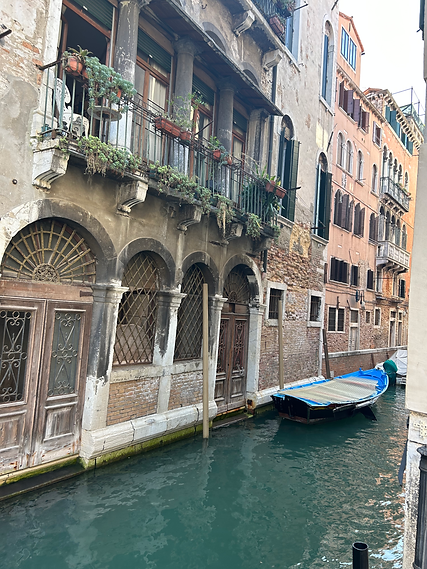
Courses

Unlearning Argument
Winter 2020
Rhetoric. Persuasion. Argument. We were asked what came to our minds when we read these terms. How did they connect to a thesis-driven essay with body paragraphs? Or a Lincoln-Douglas debate with two competing sides? Or a game of Monopoly with a forgotten lesson? And lastly what, exactly, was an argument? In this course, we approached argument not only as a practice but also as an idea, one that had (ironically) generated copious arguments. We worked to develop a rhetorical theory (i.e., an argument about “argument”) in conversation with existing rhetorical theories. Throughout the class, we put our rhetorical theories into practice.

Creative Writing and Fiction
Spring 2022
In this course, we examined and played within the form of the short story. We were asked: What can the short story do, and what can’t it? How does a practiced writer approach the task of composing in this form? What is the short story’s unrecognized potential in our own work? In this course, we read and responded to a range of short stories then, produced and revised our own. We thoughtfully discussed our peers’ work, and engaged in collective meaning-making about the short story as a form.

Theories of Writing
Spring 2022
We took the time to wonder, really wonder, "what is writing"? And considered where writing came from or how the different mediums, methods, and tools used to create it intersect and connect together? We pondered for a moment who we are as a writer? This course explored the theories (and perspectives) found behind writing to dig a little deeper into what it means, how it is currently as well as historically defined, and what it represents today. To investigate writing in these ways, we read, wrote, and reflected on a variety of perspectives on writing including, but not limited to the following: (1) the transition from written to oral culture; (2) the relationship between writer and reader; and (3) the social. There was a bit of reading, there was a bit of writing, and there was a bit of investigation into writing, the noun, and writing, the verb, especially as it relates to us as a writer in the 21st century.

Biochemistry Research Grant
Spring 2023
I started participating in Independent Research my junior year here at the University of Denver. My research was on how calcium levels affect the exosome secretion of A549 cells. This was a research proposal I wrote for the Undergraduate Research Department for summer research project funding.

Cellular Microbiology
Spring 2023
The field of cellular microbiology broadly defines the interface between commensal or pathogenic microbes, prokaryotes or lower eukaryotes, and their host. This course focused primarily on the interface between pathogenic prokaryotes and higher eukaryotes (humans/livestock). It investigated the burgeoning field of cellular microbiology and its explosion of new knowledge related to the feedback regulation between pathogenic microbes and their hosts. Our knowledge of virulence factors that promote host and pathogenic microbe niches continued to expand throughout this course. This course helped us build a medically relevant and coherent picture of the host - microbe interface on genetic, molecular, cellular, and organismal scales by surveying relevant literature that has uncovered interspecies communication and control pathways.

Composition Theory
Winter 2023
We were asked: what could be more intellectually engaging and, dare I say, fun than trying to account for writing in all its guises, from editorials to poems, school papers to novels, academic discourse to popular, shopping lists to blogs to movie scripts to short stories to memoirs--and more? This was especially true for an historical moment when generative text AI (think Chat GPT) raises fundamental questions about the nature and value of writing. We used this development as a framework for several questions we were asked: How did writing come into being? Who "invented" it, and how? How do writers develop--and why are some better than others? Why do some people want to be writers--and others want nothing to do with writing? How do technologies inflect writing? Where does creativity come from? How about style? How do our brains work when we write? What role does reading play? How about experience? How about gender? Does writing "map" reality or does it "create" reality? What are the purposes of writing? The history? The definitions? Why do these questions matter? What are genres and how do they work? How do media of production and circulation change writing?

Writing Design and Circulation
Spring 2024
This was the capstone class for the Minor in Writing Practices. It was the culmination of an academic program, and in this case, was meant to capture the writing experiences and instruction that we had been a part of thus far at the University of Denver. The major project that we completed for this class was an online Portfolio, and we composed, produced, and designed activities along the way to contribute to this Portfolio as well as our own learning. As part of the path to creating this portfolio, we did a substantive revision of a previous writing assignment, learned about curation and circulation of writing, and conducted some analyses of our writing and writing process. The course culminates with the public showcase of our portfolios.
Furthermore, in putting together our portfolios, we reflected on our writing experiences throughout college, specifically how we had developed as a writer and learned more about writing. We reflected on how our writing had helped us develop as a person. Finally, we reflected on what our portfolio says about our future professional goals and how we will revise our portfolio further after this class to reach our professional and personal goals after we graduate.